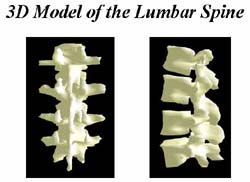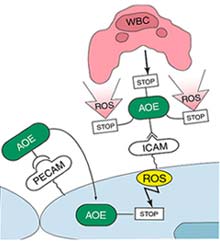Latest News

Moving X-rays to revolutionise the diagnosis of back pain
A new image processing system devised by engineers at the University of Southampton could change the way that back problems are diagnosed and provide a solution to one of the most common causes of work loss in the UK.
Low back pain is a significant problem and its cost to society is enormous. However, diagnosis of the underlying causes remains problematic despite extensive study. Reasons for this arise from the deep-rooted situation of the spine and also from its structural complexity

Inspired by nature, Cornell chemist finds way to make biodegradable plastic that imitates bacteria
Finding an economical way to make a polyester commonly found in many types of bacteria into a plastic with uses ranging from packaging to biomedical devices is a long-held scientific goal. Such a polymer would be a “green” plastic, in that it would be biodegradable.
Geoffrey Coates, a professor of chemistry and chemical biology at Cornell University, Ithaca, N.Y., has partially achieved this goal by discovering a highly efficient chemical route for the synthesis of the polymer, known as po

Making plastic smarter with protein
How do you improve on plastic, a modern material that has already changed the way we do everything from design medical devices to build cars? Embed it with specialized proteins called enzymes, says Shekhar Garde, assistant professor of chemical engineering at Rensselaer Polytechnic Institute.
“Such protein-enhanced plastics might someday be able to act as ultra-hygienic surfaces or sensors to detect the presence of various chemicals,” says Garde. These types of materials could have a wide

Teaming up to attack free radicals
Antibody/enzyme combo protects transplanted lungs from oxidative stress damage
Researchers based at the University of Pennsylvania School of Medicine have combined the precision of antibodies with the power of an antioxidant enzyme to create a new way to protect transplanted lungs from oxidative stress – also known as free radical damage – before and during transplantation.
Their findings, presented in the April edition of Nature Biotechnology and available online now, demon

Gene responsible for developmental disorder identified
Discovery could lead to new therapies for Smith-Magenis Syndrome
Researchers at Michigan State University have identified the gene responsible for a developmental disorder known as Smith-Magenis syndrome (SMS), a discovery that could lead to new therapies for the disorder and the myriad problems that accompany it.
The finding is documented in the March 24 issue of Nature Genetics, a prestigious peer-reviewed British journal.
SMS is a chromosome microdeletion syndrome th

Fabricated microvascular networks could create compact fluidic factories
Using direct-write assembly of organic ink, researchers at the University of Illinois at Urbana-Champaign have developed a technique for fabricating three-dimensional microvascular networks. These tiny networks could function as compact fluidic factories in miniature sensors, chemical reactors, or computers used in applications from biomedicine to information technology.
“The fabrication technique produces a pervasive network of interconnected cylindrical channels, which can range from 10 t











